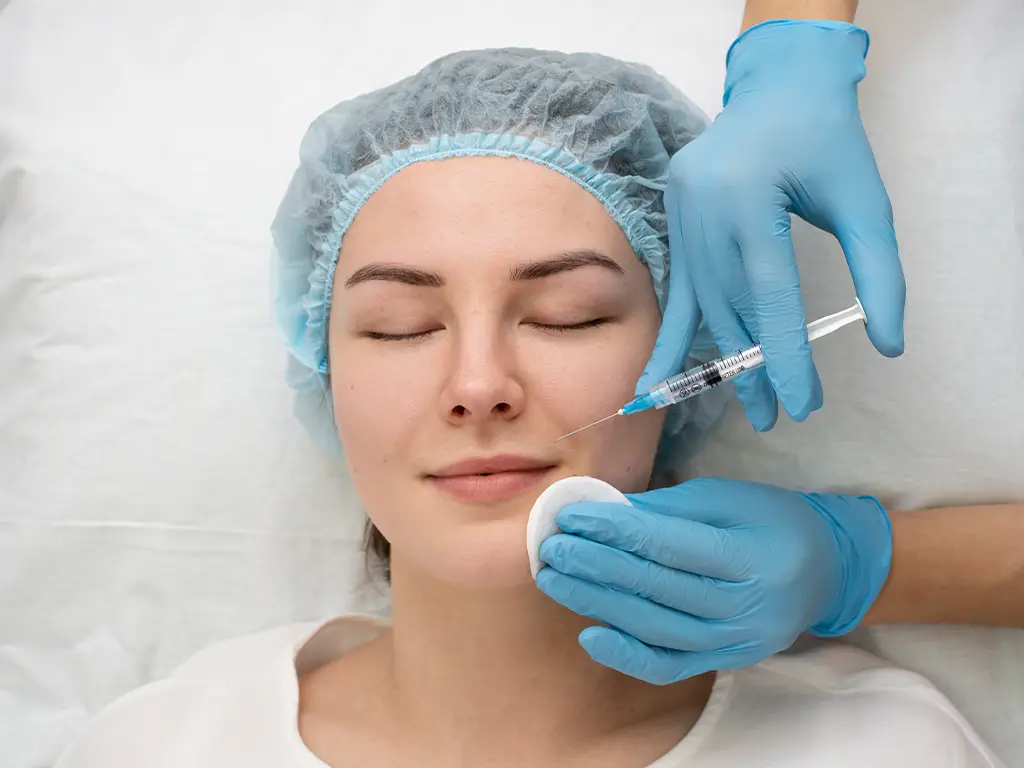Facial fat injection is an aesthetic surgery procedure performed to transfer fat to certain areas on the face.
Accomodation
2-5 Hours
Healing
Follow-Up Visit
What is Facial Fat Injection?
Facial fat injection is an aesthetic procedure performed to transfer fat to specific areas of the face. In this process, fat tissue taken from other parts of the body is purified and injected into the face. Fat injection into the face is commonly used to restore facial volume loss, fill wrinkles, reduce scars, and contour facial lines.
Why is Fat Injected into the Face?
Those considering facial fat injection surgery are generally individuals seeking to restore facial volume loss or correct wrinkles in specific areas. Facial volume loss can occur due to aging, weight loss, or genetic factors, leading to a tired and aged appearance. Facial fat injection provides an effective solution to regain lost volume and achieve a younger, fuller appearance.

Does Injecting Fat into the Face Give Permanent Results?
The results of facial fat injection are generally long-lasting or permanent because the injected fat tissue is typically accepted as permanent by the body. However, factors such as the aging process, genetic factors, and lifestyle can influence the durability of the results over time. Therefore, some patients may require additional injections or other aesthetic procedures.
What Are the Effects of Fat Injection into the Face?
Fat injection is commonly used to plump the lips, reduce deep wrinkles, and enhance the cheekbones. The effects of fat injection on the face can be listed as follows:
What Should Be Considered After Facial Fat Injection?
After facial fat injection surgery, there are a few important points patients should keep in mind. Swelling, bruising, and mild pain are normal post-surgery. These symptoms usually subside within a few days, and the healing process can be sped up with medications and ice applications as recommended by your doctor. Additionally, avoid applying excessive pressure to your face during the postoperative period, and follow your doctor’s instructions on rest and nutrition.
Is Facial Fat Injection Risky?
Facial fat injection surgery carries some risks. These may include infection, excessive fat absorption, uneven distribution of fat tissue, tissue loss, swelling, or hypersensitivity. However, these risks are generally minimal when performed by an experienced surgeon.
Who May Consider Facial Fat Injection?
Facial fat injection is a suitable option for individuals experiencing facial volume loss or wanting to reduce wrinkles in certain areas. Those who are young, healthy, and fit for surgery are generally good candidates. However, pregnant or breastfeeding women, individuals with serious health conditions, or those with extremely oily skin should consult their doctor before undergoing the procedure.
Conclusion
Facial fat injection is an effective aesthetic procedure for those wishing to reshape facial contours, restore lost volume, and achieve a more youthful appearance. However, like all surgical procedures, it comes with certain risks and considerations during the healing process. It is essential for patients to follow all pre- and post-procedure instructions and maintain communication with their doctor.

ŞANSEL KAVLAKOĞLU SAĞLIK HİZMETLERİ LİMİTED ŞİRKETİ
İzzet Paşa Mah Yeni Yol Cad. No:22/A Nurol Tower Plaza Kat:11 No: 1103 Şişli, İstanbul, Turkey
Mednificant holds an international health tourism accreditation. Our affiliated hospitals and clinics are accredited to both national and international standards, and all treatments are provided at these accredited health facilities.